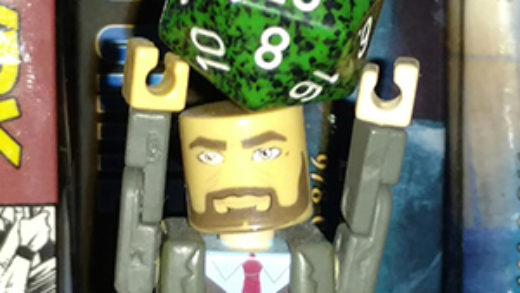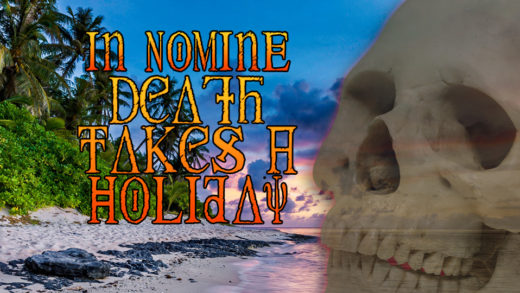Characters vs Nature is one of my favorite gaming tropes. As it’s a more nebulous conflict, it often encourages more role-playing and puzzle solving, rather than direct combat. And, when the stakes are high enough, character can sometimes turn against character in the fight to survive. Weather challenges are a particular go-to of mine. Inclement weather is not genre specific and can be used as ambiance, to direct players, or to offer additional challenges within a scenario. It can also be used to make the world they’re in seem more real and alive.
Shelter
Harsh weather can be a way to steer characters to a nearby shelter. This shelter can end up being the session’s main adventure or kick-off to a series of adventures. Haunted cabins, caves with mysterious tunnels, and scary castles and mansions often seem to be nearby when nature strikes out against the players. The shelter can also serve as a more benign entity, perhaps allowing the players a bit of a break and doing some in-party role-play as the characters wait out the weather. Or, perhaps there’s some information or items within the shelter that can later be used in the session or campaign.
Visibility
Whether the weather is a downpour of rain or snow, thick fog in the air, or bright sunlight reflecting on natural or man-made surfaces, nature often has a way of decreasing visibility. Detriments to sight can be used to inflict general penalties on character actions. Impaired visibility may also make characters misinterpret what’s around them–perhaps they see things moving that aren’t really there or maybe they don’t see what’s lurking around them at all. Fog and night are the standards for presenting characters with visibility issues, but blinding light should not be overlooked (pun not intended) as it has lingering effects that fog or dusk do not. Not only can bright light present a character with visibility issues, it may take their eyes longer to adjust when moving into a darker environment (like a building).
Mobility
Rain, snow, and wind offer challenges in travel and general mobility. Characters are often forced to fight against the elements just to move in a desired direction. Bad weather can be used to make a trip take longer than expected or desired, creating conflict if the characters are in some sort of race against time. Characters may be forced to take action rolls to control their vehicles or mounts. Soaked and wet clothing can add penalties to individual actions. Even visibility issues may force characters to move more cautiously or slowly. One should not forget the impact of weather on mobility.
Survival
If the characters are in the wild then bad weather can raise the challenges of survival. Hunting and gathering may be considerably more difficult. In cold weather environments a rain or snowstorm can lower temperatures further and make it harder to sustain a fire. In hot weather environments the blinding sun and lack of shelter can be fatiguing on characters. No matter the environment and the inclement weather, how it affects the character’s survival should be considered. Often the challenge of surviving a day or night can be a session in and of itself.
The Big Disasters
Of course, the above are more common weather-related ideas. There’s also the big disasters like hurricanes, typhoons, and tornadoes. And general bad weather can lead to increasing dangers like mudslides, avalanches, extreme flooding, and general breakdowns of terrain and man-made structures. As a GM I don’t use the “big ones” often, but when I do, I typically aim for the characters to first have to deal with the tragedies, then to be a part of the relief or rebuilding efforts. This is often helpful for getting the PCs more involved in the community of the area they are assisting, allowing the GM to put more NPC names and faces in front of the PCs that they normally might not seek out on their own during the course of standard sessions.


Recent Comments